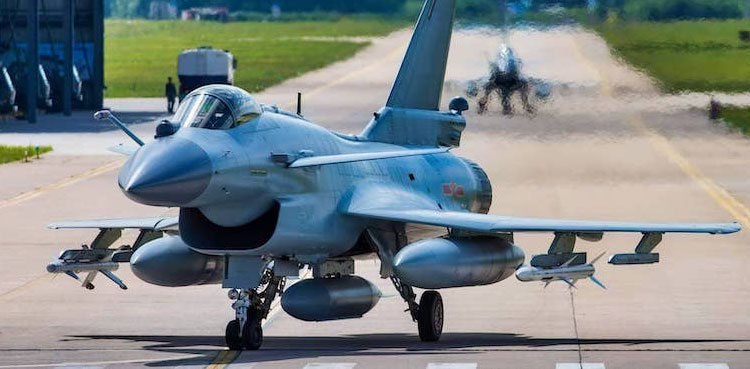Pakistan deployed China’s J-10C “Vigorous Dragon” fighter jet in its recent conflict with India, marking one of the aircraft’s first combat engagements. Pakistan acquired its first J-10C jets in 2022, integrating them into its air force to counter India’s capabilities. This deployment not only showcases the jet’s combat prowess but also signals China’s growing influence in the global arms market.
The J-10C: A Formidable Multirole Fighter
The Chengdu J-10C, designed and produced by China’s state-owned Chengdu Aircraft Corporation (CAC), is a medium-weight, single-engine, multirole combat aircraft. Initially introduced in 2004 as the J-10, the J-10C represents a significant upgrade, positioning it as a competitor to advanced Western fighters like the U.S. F-16 Fighting Falcon. Its primary role is air superiority, but it excels in strike missions, equipped with advanced technology and weaponry.
Pakistan-India Conflict -All Stories
Design and Capabilities
The J-10C features a distinctive canard-delta wing configuration, with two canards behind the cockpit enhancing maneuverability. Its fly-by-wire controls ensure precise handling, while its 11 external hardpoints—five on the fuselage and three on each wing—support a versatile payload:
- Air-to-air missiles: PL-8 (infrared homing, based on Israel’s Python 3), PL-11 (based on Italy’s Aspide), PL-12, PL-15, or Russian Vympel R-73 and R-77.
- Surface attack: Up to six 500-kg laser-guided or free-fall bombs, and pods with 90 mm unguided rockets.
- Cannon: A single-barrel 23 mm cannon.
The aircraft is equipped with cutting-edge systems, including:
- AESA radar: Capable of tracking 10 targets and engaging four simultaneously, with a detection range of approximately 100 km.
- Electronic warfare system: Enhances survivability in contested environments.
- Infrared tracking and laser designator pod: Supports precision-guided munitions.
- Reduced radar signature: Improves stealth characteristics.
Engine Evolution
Early J-10 models relied on the Russian AL-31 engine, originally designed for the Su-27. The J-10C, however, is powered by the domestically developed WS-10B engine, offering improved performance and reducing China’s dependence on foreign technology. This shift underscores Beijing’s advancements in military aviation.
Combat Debut and Strategic Impact
Pakistan’s use of the J-10C against India in 2025 highlights its operational readiness. With 80% of Pakistan’s military equipment sourced from China, the J-10C’s integration strengthens Islamabad’s air force. Experts, like David Jordan, compare the J-10C to a late-model F-16, noting its long-range missile capabilities as a potential game-changer. The jet’s combat performance has boosted the stock of Chengdu Aircraft Company by over a third, reflecting market confidence in its capabilities.
China’s Global Market Ambitions
China’s showcase of the J-10C at the 2024 Dubai Air Show, performed by the PLAAF’s August 1st Aerobatics Team, was a strategic move to attract international buyers. The team, established in 1962 and named for the PLAAF’s founding date, transitioned to the J-10C in May 2024, highlighting the jet’s upgrades. This marked the J-10C’s first public Middle Eastern display since its modernization.
Pakistan, the first foreign buyer in 2020, ordered 25 J-10Cs, followed by 11 more, receiving 20 by 2025. Building on this success, China is targeting Middle Eastern markets. Egypt has shown interest, while Algeria and Saudi Arabia, already in talks for Chinese missiles and drones, view the J-10C as a logical addition to their arsenals. These potential sales could reshape the global arms market, positioning China as a major supplier of advanced fighter jets.
A Leap Forward for Chinese Aviation
While the J-10C was once criticized as a derivative design, its upgrades and combat debut prove otherwise. The aircraft’s advanced radar, missile systems, and domestic engine reflect China’s technological strides. Though its design draws inspiration from fighters like the French Mirage, the J-10C’s unique features—such as its canard configuration and integrated avionics—set it apart.
As China continues to promote the J-10C globally, its role in Pakistan’s air force and potential adoption by Middle Eastern nations underscore its growing strategic importance. The Vigorous Dragon is not just a fighter jet; it’s a symbol of China’s ambition to rival Western dominance in military aviation.


Leave a Comment